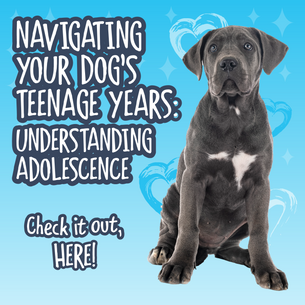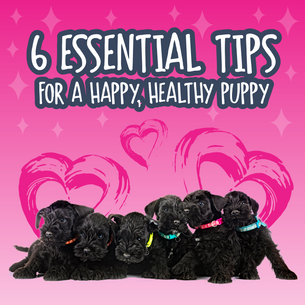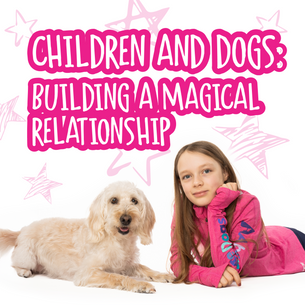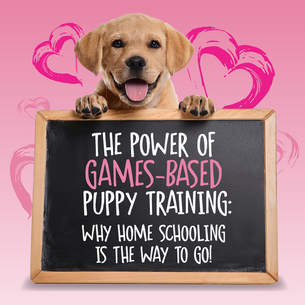Do you ever wish your dog was more excited and motivated to work for their food? Perhaps they’re just not all that fussed about eating at all.
When you think of reward-based training, the first thing that comes to mind might well be food. Treats are often the go-to for reinforcing good behaviour, but what if your dog’s a picky eater, or just isn’t that interested in food? If they seem indifferent to treats you might be feeling a bit stuck. How can you move forward with your training? How can you encourage your dog to really enjoy their food and be sure they’re getting what they need to thrive?
The good news? There’s hope! With the right approach, you can cultivate a food-motivated dog who is excited to learn and engage with you and who actually LOVES their food!
From ditching your dog's food bowl and turning meals into fun, engaging experiences, to being purposeful with how you use every piece of your dog’s dinner, keep reading for all our food motivation tips and tricks!
Top Tip 1: Ditch the Bowl - Make Food an Experience
One of the most powerful strategies you can use to boost your dog’s food motivation is to Ditch the Bowl.
Here at absoluteDogs, we're all about creating revolutionary experiences for both you and your dog, and Ditch the Bowl is an invaluable part of your toolkit. When you move away from the traditional idea of feeding your dog from a bowl, you unlock countless possibilities to use that daily pot of tasty gold to build value into your dog’s life, pouring it into the concepts and skills that will set them up for success.
Not only that - you get to turn that food into an experience! And this is where the magic lies.
Dogs value experiences way more than they value the taste of food. Think about it: your dog probably hasn’t ever tasted a squirrel, but they might absolutely LOVE the experience of chasing one!
When you make food part of a fun activity, your dog will begin to engage with the experience rather than just the food itself, and this can be a total game changer for dogs who really aren’t particularly “foodie”.
Dogs are natural foragers, hunters, and problem-solvers. When given the choice, most would prefer to earn their food than simply eat it from a bowl. The fancy term is contrafreeloading - but all it really means is that your dog is wired to enjoy working for their food - and this is key when it comes to having a crazy food-motivated dog.
Top Tip 2: Identify What Your Dog Is Passionate About
OK, so you’re on board with the idea of creating experiences for your dog with their food. But how does that look in practical terms? Maybe you’ve tried getting your dog to catch their kibble and they’ve just looked at you like you’re slightly bonkers!
It’s time to become your dog’s detective!
Your dog’s behaviour can offer brilliant clues to what motivates them and what they find rewarding. What would your dog do if they were given the choice?
Think back to that squirrel.
If your dog’s biggest passion is to chase - whether it’s squirrels, joggers in the park, other dogs or next door’s cat - it’s a strong indication that they are stimulated by movement.
Or perhaps you have a nose ninja who loves nothing better than to spend their time sniffing.
Discovering what lights your dog up is crucial. Every dog has unique preferences - experiences they find rewarding and joyful.
This could be related to your dog’s breed. For example:
- Scent hounds typically love to sniff.
- Herding breeds like Border Collies instinctively love to stalk and chase.
- Gundogs often find huge amounts of joy and reward in retrieving.
If your dog is a mix of breeds, you’ll often find they’ve inherited characteristics from both. But remember, every dog is an individual with a unique personality, so don’t be surprised if your dog doesn’t quite fit the breed manual!
Creating a reward experience is about so much more than simply placing the food under your dog’s nose or in their mouth. You need to make the food more enticing, more exciting; you need to deliver it in a way that taps into your dog’s instincts.
What does your dog find most rewarding? Sniffing? Chasing? Catching? This is where you can begin to tap into and build on that concept of contrafreeloading.
Observe your dog, become their expert and then use this information to guide how you deliver their food.
For instance:
- If your dog loves to sniff, hide their food and let them sniff it out.
- If they enjoy retrieving toys, use toys that hold food to bridge the gap between toy play and food.
- If your dog is stimulated by movement, get that food moving! Flick it, bowl it across the floor, throw it, ping it!
By identifying these preferences and working with your dog’s instincts you can create fun experiences that your dog wants to engage with - building the value of the food by way of that engaging, rewarding experience!
And not only that - you’re increasing dopamine, the feel-good chemical in the brain, which can make your training sessions even more enjoyable and effective. It really is win win!
Top Tip 3: Discover Your Dog’s Unique Tastes
It might seem obvious, but just like humans, dogs have individual taste preferences. Some dogs go mad for chicken or cheese, while others might go nuts for a piece of cucumber!
Imagine eating the same meal, day after day after day. It would be pretty boring, right? Or being fed chocolate ice cream as a treat when you really don’t like chocolate, but you’d love strawberry!
Dogs are no different. Eating the same kibble, day in and day out day, is uninspiring! Unless your dog has sensitivities which mean you are restricted to certain brands or particular protein sources, think about how you can vary what they get to eat and make it an enriching experience.
Experiment with different textures, flavours, and even temperatures to find out what your dog prefers.
Part of the joy of ditching the bowl is being able to offer great enrichment opportunities. There is incredible power in exploring fun and creative ways to use your dog's daily food to not only grow core skills and behaviours, but also to unlock a wonderful world of mental and physical stimulation that enriches your dog’s daily life. In fact, it’s something we’re so passionate about that we’ve dedicated a whole blog to this subject.
Top Tip 4: The Importance of Short, Fun Sessions
Rehearsal is powerful in every area of your dog’s life! This can work to your advantage, or your disadvantage.
If you’ve ever had a dog who has learned to bog off the moment you unclip the lead, ignore your recall and find endless fun staying just out of reach at the end of a walk - or a canine thief who has been rewarded with an epic game of chase every time they steal your shoe or pinch a sock from the washing pile, you’ll know how quickly unwanted behaviours can accidentally become reinforced.
The more your dog learns to say “no” to food, the more they will keep on saying “no”.
But here at absoluteDogs we’re Gamechangers! We’re all about solutions! So let’s flip that on its head.
The more your dog rehearses engaging with their food, enjoying the experience and saying “yes”, the more they will do that too!
If you’re struggling, it can help to set aside three weeks where you work intentionally on building your dog’s food motivation. Divide your dog’s daily food allowance into multiple small portions, and deliver it in lots of short, fun sessions over the course of the day - making sure you’re tapping into those joyful behaviours you know your dog loves and creating the ultimate reward experience every time.
And super, super important. If you find yourself saying “just one more…”, stop! Leave them wanting more!
Remember to start in easy, low-pressure environments to build a history of positive food experiences.
If your dog is overwhelmed or stressed, don’t offer food and give them the option to say “no”.
It might seem obvious, but play when your dog is hungry!
And another really important tip. Be aware of pressure, and don’t add rules too quickly! It can be very easy to fall into the trap of asking your dog to control themselves around food too soon, or to put too many rules around what your dog has to “do” before they get the food. It’s understandable. You don’t want a dog who learns to scavenge or countersurf, or a dog who tries to swipe your dinner straight off your plate. Manners around food are important. But when you’re building motivation and desire to work for food, it’s so important to grow passion and desire before you control the chaos!
Impulse control can come later - and there are so many fun games you can play to build it, which you can find in Games Club - the home of games-based concept training.
Over time, as your dog associates food with fun and rewarding experiences, their motivation to work for food will increase - and you’ll find they are saying “yes” way more often!
Top Tip 5: Match Your Reward to the Environment
As you’re building your dog’s motivation for food, this is another really important consideration.
If your dog is less of a foodie by nature you really do need to be intentional about what type of food you use in what environment. Once you’ve identified your dog’s tastes and you know whether they would choose chicken or cucumber as the ultimate reward, make sure you’re using high value food in more complex, challenging environments - especially while you’re building your dog’s motivation to play and engage and work with you, and with food.
Over time, as your dog learns to value the experience, you’ll be able to vary the value of food you’re using and have much more flexibility of reward options.
Top Tip 6: Every Piece of Food Has a Purpose
Once you’ve unlocked your dog’s passion rewards by creating amazing experiences that they truly value, it’s time to start paying your dog in the currency they have learned to value.
Remember - while some dogs are SO excited by food that the 3-week old kibble from the bottom of your pocket which has been through the wash a couple of times is still the best thing ever - as a general rule dogs prefer to work for their food - so consider how each piece of food can serve a purpose and how you can be intentional about getting your dog to earn it.
This is another huge benefit of Ditch the Bowl - and one that can often be misunderstood. It’s not about depriving your dog, or about withholding food unless your dog “does” something first. It’s about providing experiences that enrich your dog’s life - while also giving you opportunities to reward and reinforce all the great skills your dog needs for a lifetime of success.
Does your dog need to learn the value of calmness? Use some of their food in calming enrichment activities like K9-Calm Mats, stuffed bones or long-lasting chews.
Does your dog need more value for staying close to you? Play games that reinforce that concept with some of their food.
It’s also worth considering whether your dog’s apparent lack of motivation to engage with food is more about their personality. Some dogs are very active “doers” who are all in and will relish games that have them chasing and following food. Others are more thoughtful by nature, and might actually prefer to earn their food for engaging their brain rather than their body.
Trick training can be a brilliant option for dogs who love to figure things out. Incorporate food into those activities to make them even more rewarding - and to further boost your dog’s value for the food rewards you’re using!
Building a Motivated Dog
Whatever challenges you and your dog are facing when it comes to food, building food motivation is entirely possible.
Ultimately, it comes down to three things.
- Figure out what your dog finds reinforcing. Understanding your dog’s preferences is key.
- Create experiences that make those rewards valuable. Turn mealtime into a game, make food a part of play, and always be part of the fun.
- Get your dog working for their rewards. The more effort your dog puts into getting their food, the more they’ll value it.
By turning mealtime into a series of fun, engaging activities, you can shift the focus from the food itself to the experience you’re creating - and with a little patience, even the most indifferent eaters can become more motivated!




